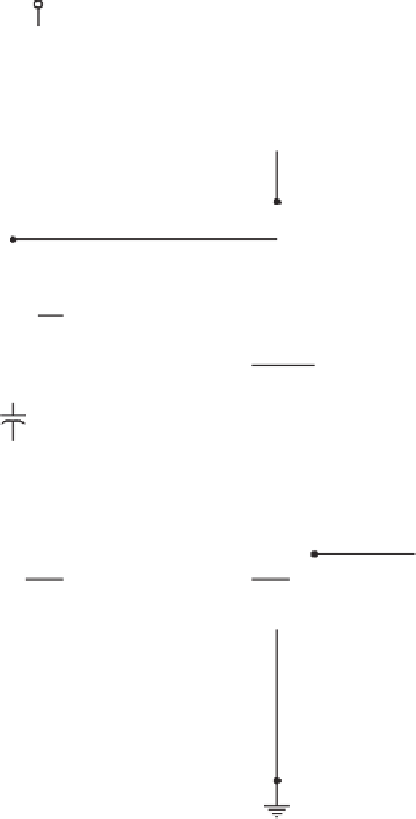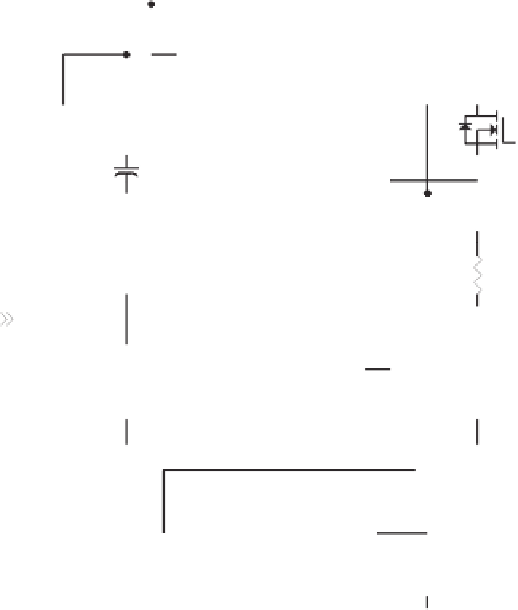Biomedical Engineering Reference
In-Depth Information
+5SW
IC30
R54
100K
1
2
3
4
8
VDD
AIN
SHDN
REF
SC
LK
7
V_CAP_OUT
CS
6
1
DOUT
Q25
BS170
C45
.01uF
5
GND
2
A/D_CS_1
MAX187
C46
4.7uF
3
SDIN
SCLK
IC31
R57
100 K
1
2
3
4
8
VDD
AIN
SHDN
REF
SC
LK
7
V_IMPED_OUT
CS
6
DOUT
Q26
BS170
1
C49
.01uF
5
GND
2
A/D_CS_2
C50
4.7u F
MAX187
3
SDOUT
IC33
HV_ADJUST
1
2
3
4
8
CLK
DIN
CS/LD
DOUT
VCC
7
VOUT
C57
.01uF
6
REF
R101
100K
5
GND
LTC1451
Q38
BS170
1
2
D/A_ CS
3
Figure 8.44
The PIC communicates with two A/D converters (one to measure impedance, the other to measure the level of high-voltage
charge) and a D/A converter (used to determine the set point for the high-voltage power supply) through a SPI serial interface. The maxi-
mum of 4.096 V output from this D/A limits the voltage output of the HV power supply to approximately 860 V. Two MAX187 A/D con-
verters measure the voltage across the capacitor bank as well as the analog output of the impedance measurement circuit.
Lead Impedance Measurement Circuit
Lead impedance measurements are made with the compensated capacitor discharge tech-
nique described earlier, which uses very small energy probe pulses to estimate the resis-
tive component of the lead system impedance. As explained before, the output of the
circuit is an analog voltage proportional to the lead impedance. Figure 8.46 presents the
actual impedance measurement circuit implemented in the shock box. In it, the “active”
capacitor C
a
(C15) is charged to 1.2 V through switch IC15A and current-limiting resistor
R29. At the same time, the “passive” capacitor C
p
(C7) is discharged through IC15D. The
ground path during this process is established through IC15C. All other switches are open
during the charging of C
a
and discharging of C
p
. This is the normal state of the state
machine.
When an impedance measurement is to be performed, the shock-box microcontroller
generates an interrupt (through line IMPED_START) to the impedance measurement















































Search WWH ::

Custom Search